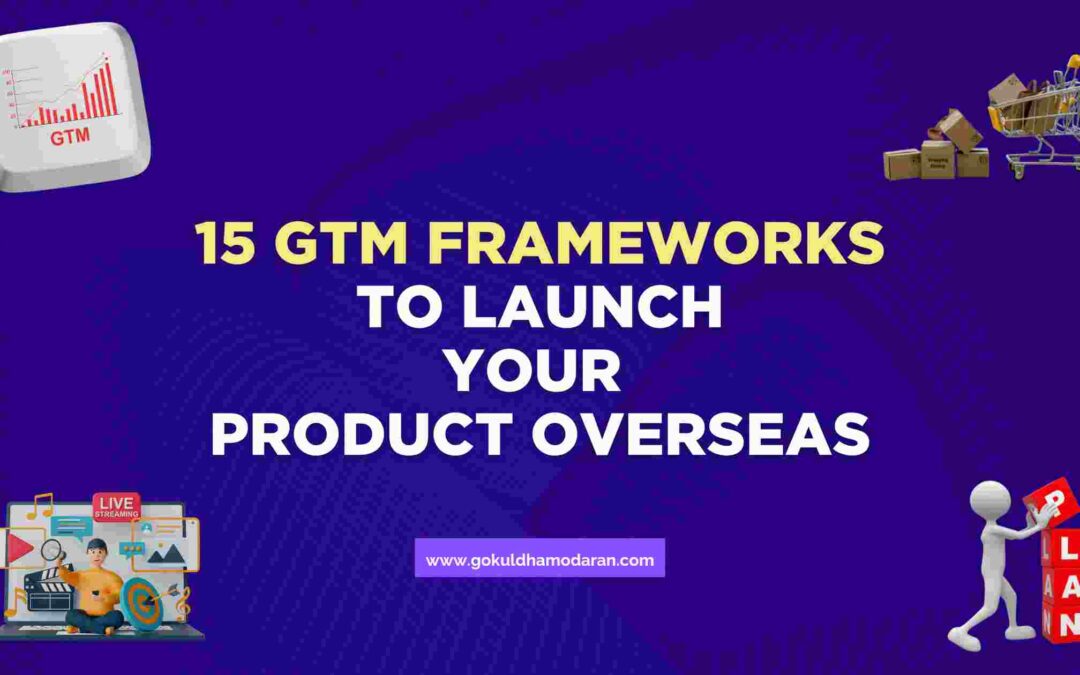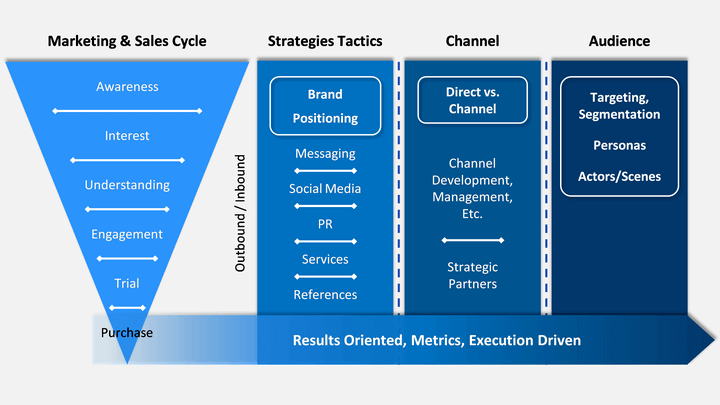
15 GTM Frameworks to Launch Your Product Overseas
Expanding your proven product into new countries presents massive growth potential along with unique launch challenges. Navigating different cultures, buyer preferences, and market conditions requires thoughtful adaptation of your GTM strategy.

The right frameworks provide a blueprint for international expansion success:
1. Market Entry Analysis
Conduct in-depth analysis on the best entry model for the target market whether direct sales, partnerships, acquisitions, or distribution. Weigh pros and cons of each approach.
2. Country Prioritization
Use a structured framework to evaluate potential countries based on market size, growth projections, competitive landscape, operational complexity, and other market attractiveness factors to phase expansion.
3. Buyer Personas
Develop detailed buyer profiles and personas for each new market to adapt messaging and positioning. Understand cultural nuances and local needs.
4. Value Proposition Adaptation
Retool your core value proposition for the new country based on distinct buyer needs, competitive offerings, and your own business objectives and cost structure.
5. Partnership Strategy
Identify quality local partners through research and networking to co-sell and distribute your offering. This builds credibility and accelerates in-country traction.
6. Localization Strategy
Deeply adapt your product, content, support resources, and messaging to resonate in the local language, preferences, and regulations. Don’t just translate – localize.
7. Pricing Strategy
Set localized pricing models based on average income levels, competitor benchmarking, and your unique cost structure, target margins and strategic goals in the market.
8. Sales Strategy
Assess opportunities to build an in-country sales team, leverage your global sales team, or use a blended model based on factors like market maturity and sales cycles.
9. Channel Strategy
Evaluate opportunities for direct sales, resellers, affiliates and digital channels in each country. Determine which channels align to your business model.
10. Marketing Plan
Develop integrated in-country campaigns across digital marketing, social media, PR, events and influencer engagement tailored to local preferences.
11. Competitor Analysis
Thoroughly research the strengths, weaknesses and strategies of both local competitors and global brands competing in the target market. Identify gaps.
12. Market Research
Conduct primary and secondary research to size the opportunity, understand buyer concerns, and refine strategies for the market using local resources.
13. Risk Analysis
Anticipate operational, cultural, regulatory and other risks to build in contingency plans to avoid missteps when launching internationally.
14. Local Team
Hire local leaders in sales and marketing that deeply understand regional nuances and can effectively champion your market launch and operations.
15. Results Tracking
Define market-specific goals and performance metrics around share, revenue, funnel metrics and monitor progress closely to refine strategies.
Conclusion
Launching an existing product into new international markets provides huge potential for growth but requires thoughtful adaptation and prep work. Leveraging proven GTM frameworks tailored to each market sets you up for global expansion success. With vigorous strategy, flawless execution and continual optimization, your product can flourish overseas and drive major revenue growth worldwide. The time is now to conquer new markets!
Partnering with experienced GTM consultants enables brands to supplement their team with dedicated experts who provide proven methodology, objective insights, and extensive launch experience to accelerate product marketing success.
FAQs:
How do I determine which international market to expand into first?
Start by analyzing markets on size, growth rate, competitive landscape, operational complexity, maturity, cultural fit and other factors. Prioritize markets where you can make the biggest impact.
What resources do I need for an international product launch?
You’ll need budget for market research, product localization, hiring local staff, marketing campaigns, operational setup and legal compliance. Partner to augment capabilities.
How should my international pricing strategy differ?
Price based on average income, competitor pricing, and costs in each market. Penetration pricing can help gain share in new markets.
When should I start building a local team?
Hire key local team members at least 6 months pre-launch in marketing, sales, and support to gain regional expertise.
How do I adapt my product for international markets?
Localize beyond just translating. Adapt to local preferences, regulations, cultural nuances in features, branding and messaging for real resonance.




